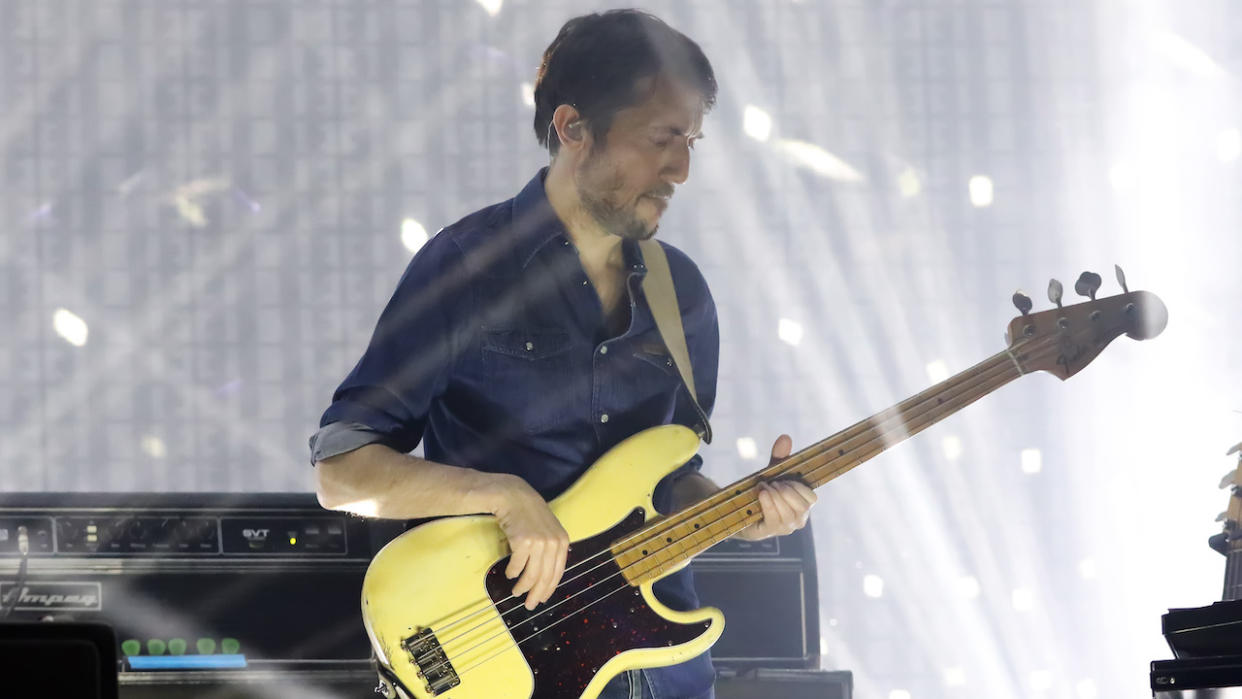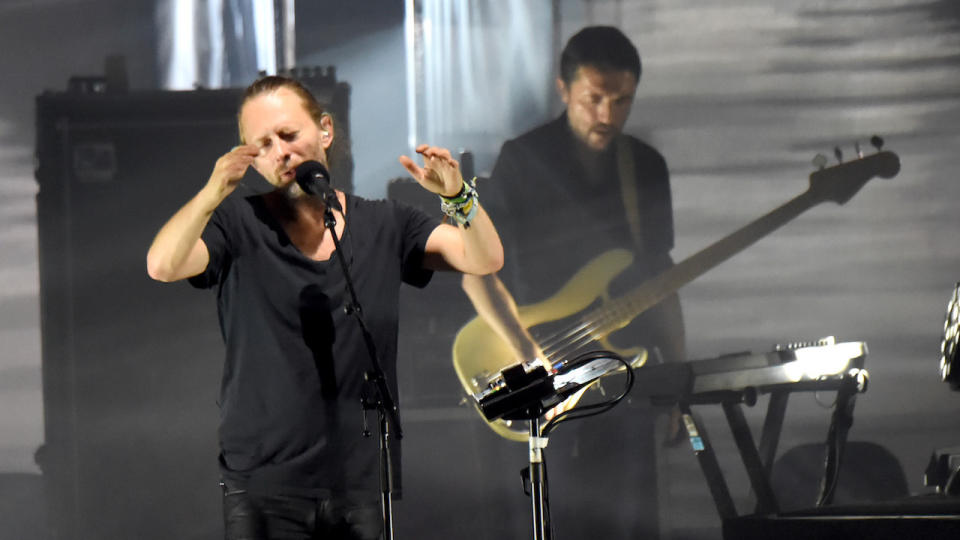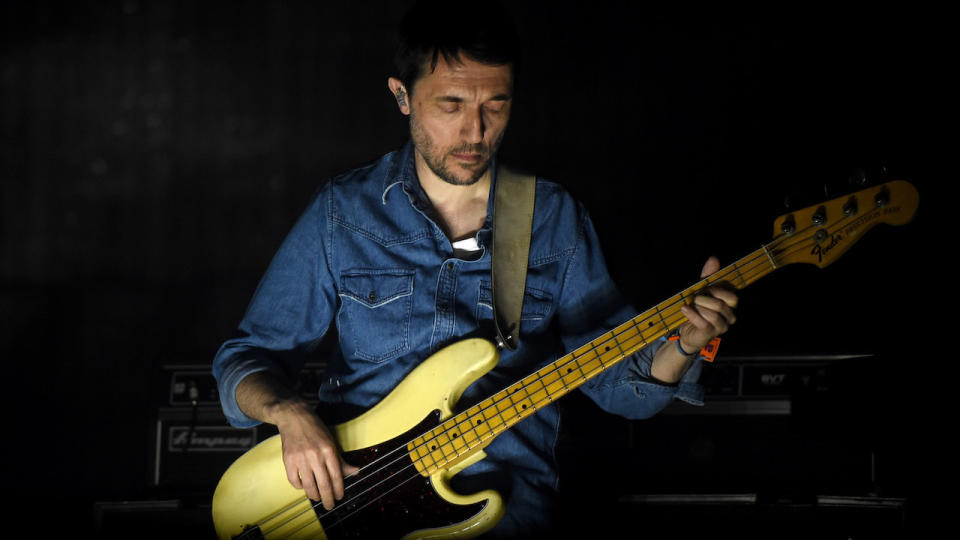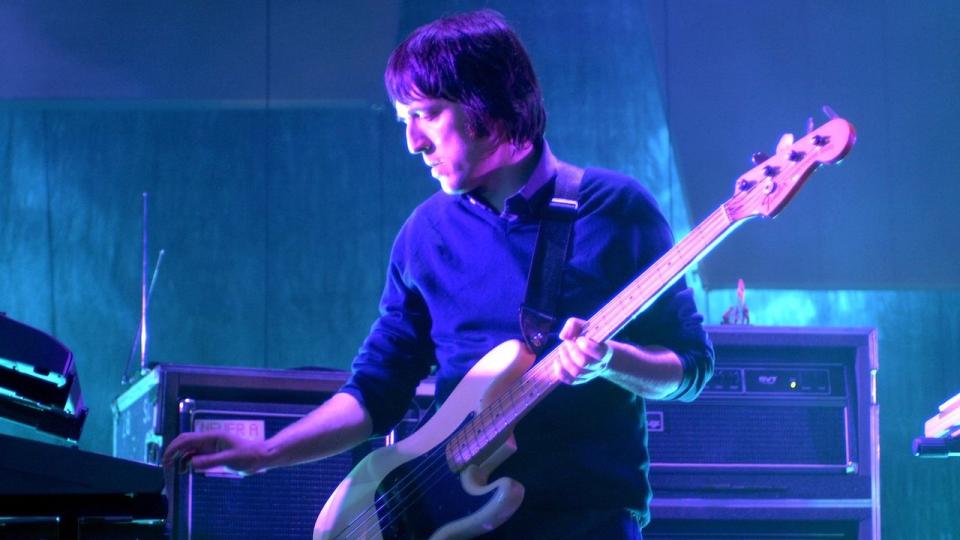How Colin Greenwood came up with his deceptive stop-start bassline on Radiohead’s Airbag

- Oops!Something went wrong.Please try again later.
- Oops!Something went wrong.Please try again later.
- Oops!Something went wrong.Please try again later.
- Oops!Something went wrong.Please try again later.
Colin Greenwood’s place in the music firmament is well established after almost four decades as bass guitarist of Radiohead. Beginning with their iconic debut single Creep, the band brought sonic sadness into the mainstream in 1993 via Thom Yorke’s languid vocals and the combined guitar crunch of Jonny Greenwood and Ed O’Brien.
An amazing band, without doubt, yet Colin Greenwood’s ice-cool, syncopated basslines seldom fit within the categories of a ‘greatest bass guitarists’ list. “I think Colin Greenwood is one of the most unsung bass players out there,” John Garrison told Bass Player. “He's incredibly musical and his underpinning of Thom Yorke's melodies is amazing.”
The opener of 1997’s OK Computer, Airbag remains one of Greenwood’s best-loved moments on bass guitar. Although it may initially appear as if the bassline is just a series of random off-beat licks, it isn't.
Similar fills appear in slightly different parts of the bar throughout the song, and the rest periods also shift. In fact, the lo-fi austerity of Greenwood’s bassline drives the whole track, even though it contains more rests than licks.
“I try to find all of the good notes and what feels best to play,” Greenwood told Bass Magazine. “Sometimes I make it too complex and too noodly, but Thom is good at putting the brakes on that. You can tell that I’ve been told not to play too much for years! Maybe that’s why it comes out in short bursts.”
Airbag works because of its inherent contrasts. While the guitars create lush, echoing textures of whole-notes held through bars, Greenwood and drummer Phil Selway are firmly on the ground, employing a primitive rock groove with a twist: Sometimes one or the other simply stops playing, even in the middle of a phrase, and then begins again.

The stop/start nature of Radiohead's rhythm section is now a trademark of the band's sound, but it was born on this track. Having cited Bay Area sample and turntable artist DJ Shadow as the inspiration for this approach, the drums on Airbag were recorded, sampled, and then cut to pieces and rearranged digitally.
As for the bassline, Greenwood reportedly left gaps that he meant to fill later, but he never quite got around to it. The quirky randomness of the part became the part, as he plays it pretty much note-for-note when the band play live.
The track was recorded in late 1996 at the historic English mansion of St. Catherine's Court. Greenwood played a '73 Fender Precision through an assortment of Ampeg gear, including an SVT rig and a B-15 combo.
It's a super-dark and thick tone – so much so that, if you eliminate everything below 250Hz, the bass disappears completely. Furthermore, the highest note on the track is C# on the 4th fret of the A string, and it happens once.
Let's get into what Greenwood actually does. The verse is where he first appears, 11 bars into the song, introducing the E-G-E-G-A motif that’s employed throughout. Things get interesting when he continues the same motif against B7, and then against F#m, where it really shouldn't work (G in the bass against an F#m melody with a G# in it?), but the tension pays off and resolves in bar 26.
He keeps at it in the re-intro at bar 28, where the drums and bass swap roles for the first time, with Selway suddenly pulling out and Greenwood continuing the same motif under a two-chord pattern (F/A-A).
From this point on, with all motifs and harmonic content essentially established, Greenwood starts mixing it up with subtle rhythmic changes.

For the guitar solo, Greenwood inverts the motif’s rhythm – starting it on the last 16th-note of two as opposed to four – and mixes in little variations and fills, all in the lowest six notes of the instrument's register. This powerful shift propels the tune forward into the final chorus, where he puts it all together.
Then, the big payoff: the breakdown and outro groove, where Greenwood channels a classic R&B riff, cuts it into stop/start techno pieces, and finally plays it continuously through ten riveting bars.
For a closer, he actually comps the tune's intro changes, straying from the main motif for the first time in the song just seconds before it ends.
Though you may be skeptical of the bassline, this opening track from an album often cited by critics as one of the top 10 records of the '90s has the Greenwood/Selway signature retro-techno stamp all over it, and set the course for the rhythm section of one of today's most appreciated bands.

Greenwood, though operating in a thoroughly modern context, noted in 2001 that his roots are like many of ours: “I'm really more of a soul boy. Bill Withers and Curtis Mayfield, those are the people who informed me in playing the bass. That combination of rhythm and melody.”
Even on a track as anti-roots as Airbag, it shows. And it grooves.

